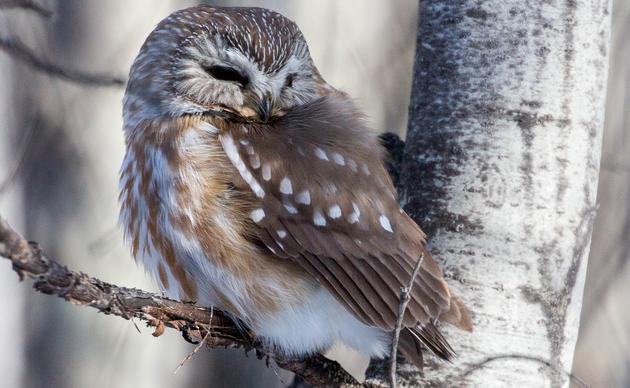Wind Power Position
Audubon New York - Position on Wind Power Development
Adopted June 22, 2004
Audubon New York supports the development of renewable sources of energy, including wind power. Energy from nonrenewable sources, such as fossil fuels, is associated with several major negative environmental impacts, including habitat damage from mining and drilling, oil spills, pollution, acid rain, and global climate change, among others. To the extent that use of wind power reduces fossil fuel use, these negative environmental impacts that harm birds and other wildlife may be reduced.
Wind power is a clean, renewable source of energy with few negative environmental impacts. However, wind power facilities have the potential to negatively affect birds and other wildlife through direct mortality from collisions and through habitat degradation from turbine construction and maintenance. Audubon New York supports efforts to minimize potential negative impacts of wind power through proper site assessments prior to construction of wind turbines, avoiding the placement of wind energy developments in high risk areas, and through thorough evaluation of avian mortality at existing and new wind turbine facilities.
Audubon New York calls for comprehensive avian surveys at proposed wind turbine sites prior to site development. Assessing avian use of a site prior to wind turbine development is a crucial first step in preventing wind farm placement in high-risk areas. Pre-development surveys should include both field and radar surveys during the breeding, migrating, and wintering seasons, should allow for adequate observation sample sizes (i.e., sampling days), and ideally would occur for more than one year.
Audubon New York opposes wind farm development on sites determined to be of high risk to bird populations, including: 1) sites of known local bird migration pathways or in areas where birds are highly concentrated during migration; 2) sites in habitats known to be important to state and federally listed bird species; 3) Important Bird Areas (IBAs) and Bird Conservation Areas (BCAs) identified for their importance to large numbers of migrants, either raptors or nocturnal migrants; and 4) IBAs and BCAs where construction of the turbines (i.e., the footprint) would significantly lower the habitat value of the site.
To learn more about how and in what circumstances wind turbines significantly increase bird mortality and potentially impact bird populations, Audubon New York calls for additional, thorough studies to be conducted on the impacts of wind energy projects on birds at existing wind sites and for three to five years following the construction of new sites. These studies should be paid for out of a fund established by wind energy producers.
Finally, Audubon New York encourages the United States Fish and Wildlife Service (USFWS) and New York State Department of Environmental Conservation to continue refining the USFWS interim guidelines for the siting, design, construction, and lighting of wind towers to mitigate potential negative impacts to birds, other wildlife, and their habitats.
How you can help, right now
Donate to Audubon
Help secure the future for birds at risk from climate change, habitat loss and other threats. Your support will power our science, education, advocacy and on-the-ground conservation efforts.




